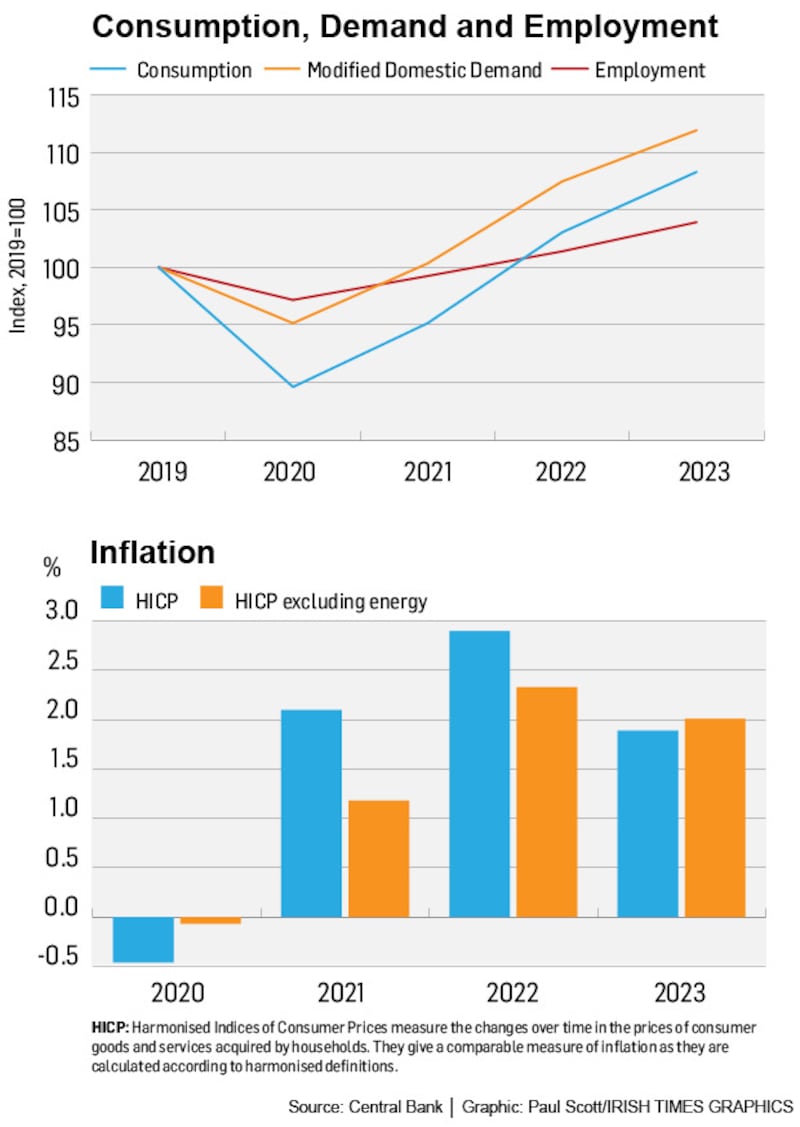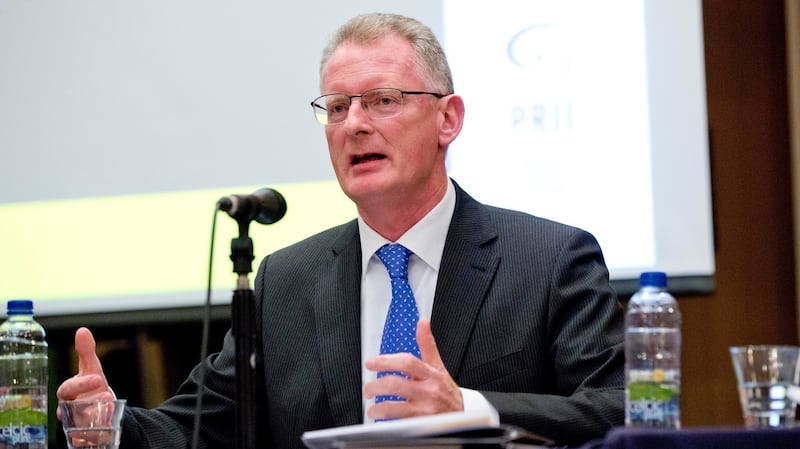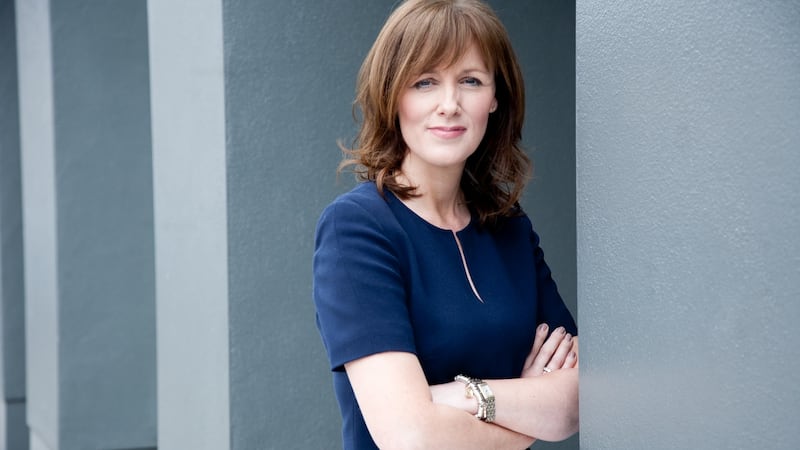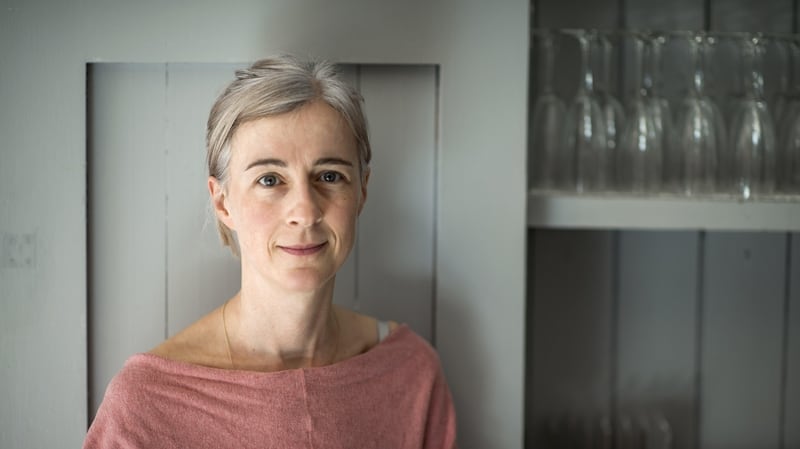The economic bounceback is on – and it is outpacing what pretty much anyone had expected. A straw poll of business people tells the story – “flying”, says a senior banker; “in general very positive”, according to a business lobbyist; “never busier”, says a recruiter; “mad” says a senior lawyer.
Economic forecasts for this year are being revised up – for a second or third time in most cases. “The Irish economy is recovering swiftly, and domestic economic activity will reach its pre-pandemic level by the end of this year,” according to the latest Central Bank forecasts. Most predictions now see underlying economic growth – when volatile factors related to multinationals and aircraft leasing are factored out – at around 5.5 to 7 per cent this year.
Clearly, a lot of this is a bounceback from the unprecedented year that was 2020 and the ongoing restrictions which ran into 2021. Multinational-driven exports supported activity and tax revenues during the worst of the pandemic – these have kept going and now consumer spending is firmly on the rise. Getting back to pre-pandemic levels of activity moving into 2022 would be six to nine months ahead of what might have been expected, and justifies the strategy of bolstering the economy with massive supports.
But a once-in-a-lifetime economic shock inevitably leaves behind big challenges. Businesses have been hit with severe labour shortages for a whole range of jobs, and some in lower-margin sectors fear the impact of this, particularly as wage subsidies introduced during the crisis are removed. Messed-up supply chains and a surge in energy prices are adding to inflationary pressures. The bounceback is on, but these are significant challenges.
For now, the level of what economists call “scarring” – the wounds that remain after the worst of the pandemic is past – looks to be lower than expected. And the growth outlook heading into 2022 will be supported by an ongoing rise in consumer spending – fuelled in part by Covid-19 savings – and strength in exports.
It forms a favourable backdrop for the two Budget ministers, Paschal Donohoe and Michael McGrath, as they stand up to deliver their package on Monday. The budget deficit this year will be way below the forecast level of €20 billion – though it will still be a hefty figure. The two Ministers have been performing the traditional pre-budget two-step, telling the public that the economy is strong while trying to persuade ministerial colleagues that there is no extra cash to spend.

Given that a big increase in spending is already written into the budget sums, this is a reasonable strategy, allowing money to be set aside in a contingency fund for next year. Additional planned spending, including a big pick-up in State investment, is already significant.
The Irish Fiscal Advisory Council, the budget watchdog has said that the current budget plans are at the limit of what is prudent. The ESRI and the Central Bank are warning about the dangers of more spending overheating parts of the economy. The message from Donohoe and McGrath is that, having moved in the summer to allow for more spending over the next few years, they are not going to change that tack.
During the pandemic there was much discussion in Ireland and internationally about the likely shape of the economic hit and subsequent recovery. Many settled on a "K-shaped" outlook, indicating that one part of the economy would hold in and rebound quickly while sectors hit by restrictions would suffer for longer.
The hope now is that the parts of the economy facing real, longer-term damage will be smaller than previously feared, meaning that the unemployment overhang will not be so severe. But those working in these sectors warn of a severe squeeze on margins from rising costs and, particularly, wages. These businesses have survived the pandemic, but are not sure of what comes next.
On the plus side, spending is rising, fuelling a strong end to the year. "High-frequency economic data now suggests that Ireland's consumer economy is returning to levels of activity last seen in the pre-Covid era," according to Ibec chief economist Gerard Brady. "These trends will become increasingly durable as we see sustained re-opening across the economy in the coming months."

This is reflected across business. Ian Talbot, chief executive of Chambers Ireland, the umbrella body for chambers of commerce across the country, points to "generally surprisingly positive" reports from across the country. There are clear signs of a pick-up in the retail sector, with some big centres reporting footfall ahead of the same time in 2019. So far Talbot reports no major sign of a pick-up in redundancies after the recent announcement that these could proceed again, though post-pandemic debt burdens and the phasing out of emergency supports will be a test in the months ahead.
In the property market, transaction levels are back at pre-pandemic levels. with Marian Finnegan, managing director of Sherry FitzGerald estate agency reporting robust demand across the market, though with a lack of supply still key to pushing up prices. The number of house sales in the first half of the year was 24,300, excluding block sales or sales to local authorities, representing a 29 per cent rise on the same period in 2020 and one per cent up on the first half of 2019. The industry will be watching for the terms of the promised extension of the help-to-buy scheme in the Budget.

Across the professional services and financial sectors, meanwhile, the general reaction is that business is “out the door”, though attracting and retaining staff is a key issue. “Activity levels are high right across the firm – very strong growth reflecting the rebound shown in the national economic figures,” says Feargal O’Rourke, PWC managing partner. “The place is flying” was the pithy summary of a senior banker. “It’s mad,” said a senior lawyer.
Speaking to businesses about their concerns, staff shortages, problems with price pressures and supply chains are now the big issues. Labour shortages and wage pressures are evident across the economy, from high-wage specialist jobs in areas of engineering, tech , science, data analytics and cyber security to lower wage positions in the retail and hospitality sector.
The big question is whether this is a short-term phenomenon as we exit the pandemic or something longer-term. There are signs that some people reassessed their employment during the pandemic and retrained – or retired – while others returned to their home countries and have not come back. More than one-third of those on the PUP payment were seeking work in August, according to research from Indeed, the jobs website. But job postings are 37 per cent ahead of pre-pandemic levels and tourism and hospitality are facing what Indeed economist Jack Kennedy described as " acute staff shortages".

Angela Ruttledge, co-owner of Olive's Room restaurant in Raheny and Monck's Green in Phibsborough wonders if the economic rebound is sustainable.
“Labour shortages and accommodation costs are driving dramatic wage inflation,” she says. “Our wage costs have increased by 20 per cent on pre-pandemic levels. Despite that inflation, none of our team that are working full-time and renting are seeing the benefit of these increases, so I’m worried about the deepening divide between different sections of the workforce. There’s a bounce for some but not for others.”
Ruttledge hopes for some relief for lower-paid employees in the Budget and the extension of the 9 per cent VAT rate for the sector and says she is concerned about the withdrawal of wage subsidies later this year and believes they should be extended.
“Hospitality businesses will be under serious pressure to increase prices in line with these wage increases, particularly after wage subsidies are withdrawn,” she says.
Ian Talbot of Chambers Ireland says that shortages are now appearing across the economy , while wider supply chain issues – shortages of products, packaging and increased costs – are big issues.
It is part of a picture of uncertainty coming out of the pandemic, reflected in energy markets and across many industries.
“Rising costs in areas such as transport, energy and raw materials are reflective of major pressures on supply chains as the global economy reopens from Covid-related restrictions,” says Brady of Ibec. While some of these may ease over time, he says, the risk is of a “permanent rise in the cost base and uncertainty about profit margins” and competitiveness.
So the story of a surprisingly strong economic bounceback, brings with it risks ahead. The re-emergence of inflation – dormant for so long – and wage and cost pressures provide the Government with a challenge of a kind not faced for many years. Government supports seem to have gotten a lot of businesses through the last extraordinary 18 months, but they can’t last forever.
Now the challenge, with a new corporate tax regime thrown in, is to keep the show on the road as we get back to some kind of normality.










